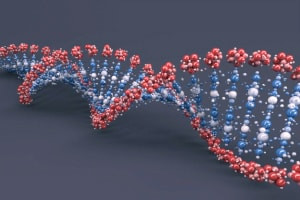Description
Introduction to Genetics and Evolution is a college-level course that is being offered to new students at Duke University at the same time. The course provides interested individuals with a very basic overview of some of the principles underlying these fundamental areas of biology. We frequently hear about new "genome sequences," commercial kits that can tell you about your ancestry (including pre-human) from your DNA or disease predispositions, debates about evolution's truth, why animals behave the way they do, and how people discovered "genetic evidence for natural selection." This course provides the fundamental biology needed to better understand all of these issues, attempts to clear up some misconceptions, and attempts to prepare students for future, more advanced Biology coursework (and especially evolutionary genetics). There is no presumption of prior knowledge.
Syllabus :
1. (A) Welcome to Genetics and Evolution
- General introduction to this MOOC, including coverage and expectations.
(B) Evidence for Evolution
- What is Evolution? (G)
- Basic Principles and Evidence for Evolution (G)
- Acceptance of Evolution (G)
- Responding to Criticisms of Evolutionary Theory (G)
- Interview with Jerry Coyne (G)
2. Genetics I
- Introduction to Genetics (G)
- Inheritance (G)
- Genetic Scales (S)
- Mitosis, Meiosis, and Ploidy (S)
- Basic Single-Gene Inheritance (G)
- X-Linked Inheritance and Independent Assortment (S)
3. Genetics II
- Recombination (G)
- Calculation of Recombination Distance (S)
- Generating a Gene Map (S)
- Bonus Video: A More Challenging Problem (S)
- Genetic Mapping (S)
- Mapping Traits Relative to Markers in a Cross (S)
- Mapping Traits Relative to Markers in a Population (S)
4. Genetics III
- Origin of Genetic Variation (G)
- Shortcomings of the Single Gene Model (G)
- Mutation Rates (S)
- Mapping Complex Traits (S)
- Complex Traits in Crosses (S)
- Genome-wide Association Studies (S)
5. Heritability and Population Growth
- Contribution of Genes vs. Environment I (G, S)
- Contribution of Genes vs. Environment II (S)
- Contribution of Genes vs. Environment III (S)
- Breeder's Equation (S)
- Population Growth (S)
- Carrying Capacity (S)
6. Population Genetics I
- Allele and Genotype Frequencies (S)
- Hardy-Weinberg Equilibrium (S)
- Deviation from Hardy-Weinberg Equilibrium (S)
- Differences Between Populations: Origins and Quantification (S)
- Differences Between Populations: Effects of Gene Flow (S)
- Inbreeding (S)
7. Population Genetics II
- Natural Selection Fundamentals (S)
- Types at Single Loci (S)
- Types Acting on Traits (S)
- Genetic Drift and Sampling Error (S)
- Sampling Error over Many Generations (S)
- Case Studies and Examples (G)
- Rate of Neutral Molecular Evolution (S)
8. Molecular Evolution
- Evolutionary Advantages of Sex (G)
- Recombination, Selective Sweeps, and Hitchhiking (S)
- Signatures of Natural Selection (S)
- Background Selection (S)
- Signatures of Natural Selection in Individual Genes (G,S)
- Searching for Natural Selection: dN/dS (S)
- Searching for Natural Selection: McDonald-Kreitman Test (S)
9. Adaptive Behaviors and Sexual Selection
- Optimality and Adaptive Feeding (G)
- Communication and Parental Care (G)
- Intro to Sexual Selection (G)
- Sexual Selection: Male Competition and Female Choice (G)
- Sexual Selection: Evolutionary Causes (S)
10. Speciation and Phylogenetics
- Keeping Species Separated (G)
- Speciation: Effects of Geography (S)
- Speciation: Genetic Control (S)
- Reading Evolutionary Trees (G)
- Generating Evolutionary Trees (S)
- Phylogenetic Comparative Method (S)
11. Applied Evolution
- Applications of Evolutionary Insights (G)
- MISapplications of Evolutionary Insights (G)








